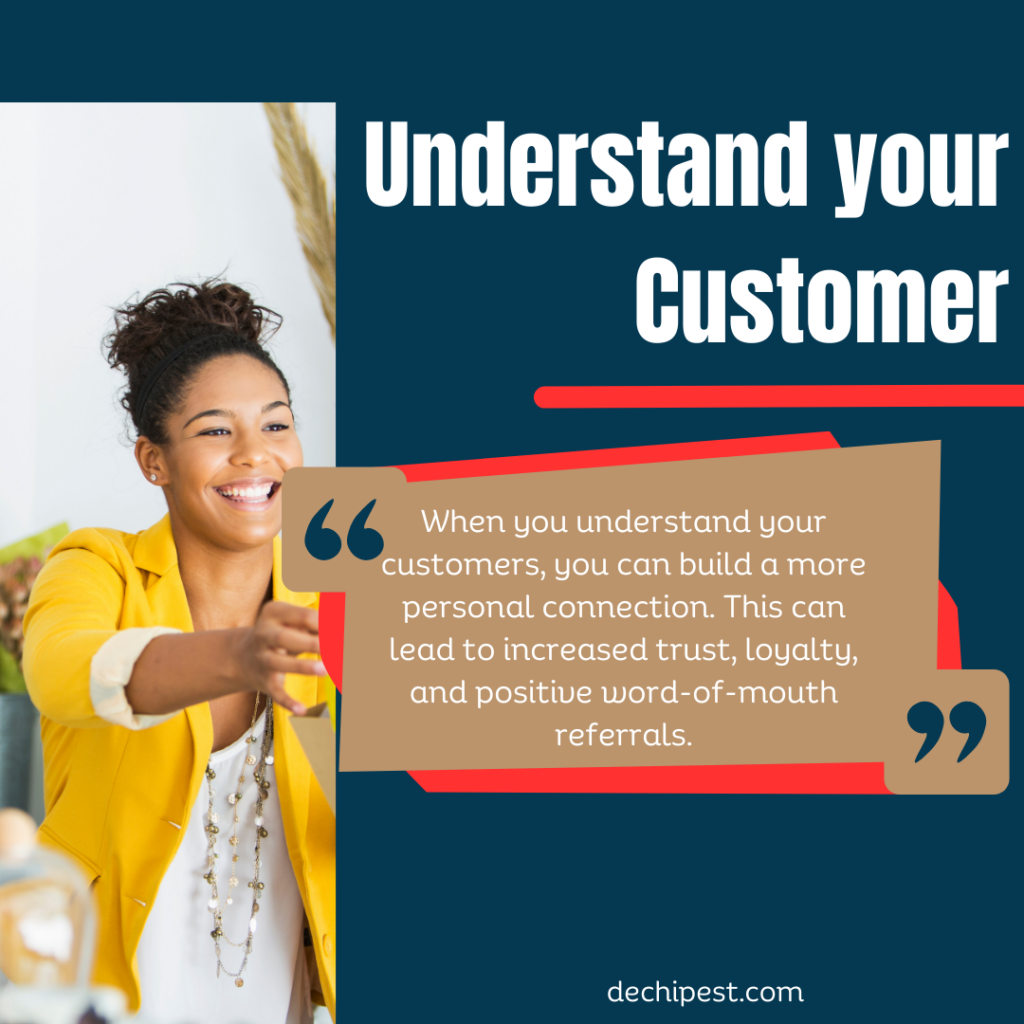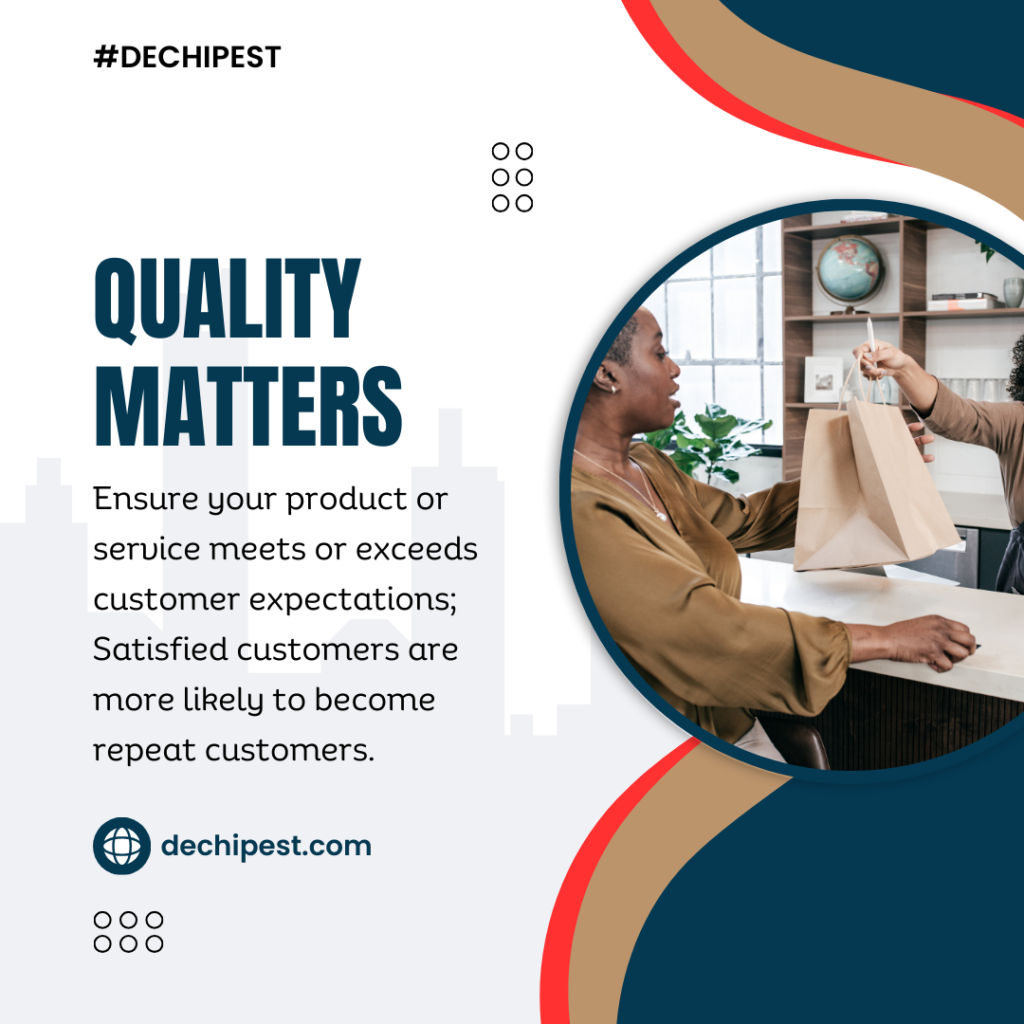
Selling is the process of exchanging goods, services, or ideas for money or other valuable considerations. It involves convincing potential customers or clients to buy from you, and it often includes activities such as advertising, marketing, negotiation, and customer relationship management.
Selling is the primary source of revenue for every business. The success of a company often depends on its ability to effectively sell its products or services. Revenue generated from sales is essential for covering operating costs, investing in growth, and generating profits.
Here are some general selling tips that can apply to various types of businesses:
1. Understand Your Customer:
You can understand your customers by talking to them, asking for feedback, and paying attention to what they like or dislike.
Use surveys, social media and direct conversations to understand their preferences. Stay connected and listen to what your customers are saying
Analyze your customers’ purchase patterns, because it provides insights into what products or services are more popular, when customers tend to buy, and how much they are willing to spend.
When you understand your customers, you can communicate more effectively, build a more personal connection and tailor your products or services to meet their specific needs and preferences. This can lead to increased trust, loyalty and positive word-of-mouth referrals.

2. Build Relationships:
Building strong relationships with your customers involves communication, trust and value. Talk to your customers regularly, ask about their needs and share updates about your products or services. Address their concerns or questions quickly and provide excellent service. Treat your customers as individuals, remember their preferences and personalize your interactions; ask for their opinions and show appreciation–small gestures like discounts or thank-you notes go a long way.
Be consistent in your service and communication; be open and honest. If there are issues, communicate them clearly and work towards solutions together.
Customers are more likely to trust a business they have a relationship with, leading to increased credibility and a positive brand image. Long-term relationships often lead to repeat business.

3. Focus on Quality:
Define what “good quality” means for your products or services. Always look for ways to do things better, small improvements add up over time. Pay attention to what your customers say–their feedback can guide you on how to improve.
Make sure your suppliers provide good-quality materials, show your commitment to quality. The processes involved in your product or service delivery should be well-defined and clear to your customers, and If possible, use tools and technology to make your work more efficient and error-free.
Ensure your product or service meets or exceeds customer expectations. Consistently delivering high-quality products or services builds a positive brand reputation. A good reputation is a valuable asset that can attract new customers and retain existing ones; customers who trust the reliability and performance of your offerings are more likely to remain loyal to your brand.

4. Communicate Effectively:
Clearly convey the value of your product or service. highlight how it solves problems or improves the customer’s life. Keep your customers informed about new products, services or any changes in your business.
Encourage your customers to share their thoughts, listen actively to understand their concerns, feedback, and perspectives. Provide quick and helpful responses to customer inquiries.
Regularly assess the impact of your communication strategies and make adjustments based on customer feedback and market trends. Clear, respectful and consistent communication can lead to customer loyalty and positive word-of-mouth.

5. Be Active Online:
Develop a professional and user-friendly website that represents your brand, provides essential information, and allows users to easily navigate and find what they need.
Create and share high-quality content that provides value to your audience; this can include blog posts, articles, videos, infographics, and more. You can also Invest in online advertising.
An active online presence makes it easier for potential customers to discover and learn about your products or service, people can make purchases or gather information about your offerings at any time, irrespective of business hours.

My brother suggested I might like this blog He was totally right This post actually made my day You can not imagine simply how much time I had spent for this info Thanks